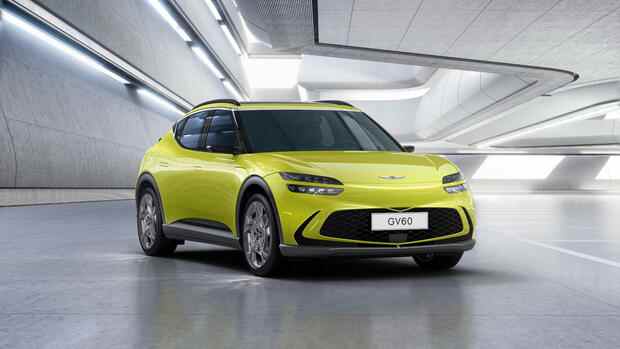“Completely redefine the concept of the car.“
(Photo: AP)
Tokyo The South Korean car group Hyundai plans to invest 13 billion euros in the development of “software-defined vehicles” (SDV) by 2030. A short-term goal of the initiative is to offer software updates for all new models in all markets via the mobile Internet from 2025 – so-called over-the-air software updates. What is everyday with smartphones often requires a visit to the workshop with cars.
Hyundai wants to deliver this function in new electric cars and combustion engines as early as 2023. In addition, the Koreans want to offer “Feature on Demand”. With this concept, customers can buy additional functions for their car for a fee – and thus open up a new source of income for the company.
Hyundai has already introduced this feature for owners of the electric model Ioniq 5 in Germany. The mobile update makes sense, especially for comparatively low-maintenance electric cars. The US manufacturer Tesla was also a pioneer here.
Hyundai’s billion-euro investment underscores the growing role that software is playing in the competition between car companies. The Japanese industry leader Toyota, for example, has already stated that it now develops its models under the motto “software first”.
Top jobs of the day
Find the best jobs now and
be notified by email.
Volkswagen is also investing massively in software development and has bundled the area for the entire group in the Cariad company. Recently, after a long delay, an upgrade to “Over the Air” was announced for the electric series. The software is considered a problem at Volkswagen.
Two platforms at Hyundai in the future
Chung Kook Park, the head of Hyundai’s development department, formulated an ambitious goal in view of the expansion. “By turning all models into software-defined vehicles by 2025, Hyundai Motor Group wants to completely redefine the concept of the car.” The Koreans want to take the lead in connecting the car, which, like a smartphone, is given new functions long after it is sold.
>> Read also: First look at the Hyundai Ioniq 6
In addition to the great potential, Hyundai’s example also shows how complex the challenge for car manufacturers is. On the one hand, software development is about shortening the entire value chain from development to production through common software platforms.
Hyundai wants to increase the number of identical components and focus the models on two platforms in the future: “eM” for electric mass models and “eS” for corporate customers who have special requirements for their vehicles.
To this end, the developers will also integrate the controllers, which previously had to be updated individually. In the course of the investments, the vehicle software will be divided into four areas – comfort, driving, infotainment and assistance systems for autonomous driving.
As expensive as the technological leap with networked, more autonomous electric mobility is, the potential for the Koreans is just as great. They hope that this will double the number of users of the company’s “connected car service” from the current ten to 20 million customers by 2025. “The large amount of data” from these connected cars will form the basis for the further development of personalized services, the company explained.
More: What the new VW boss Oliver Blume has to tackle now.
